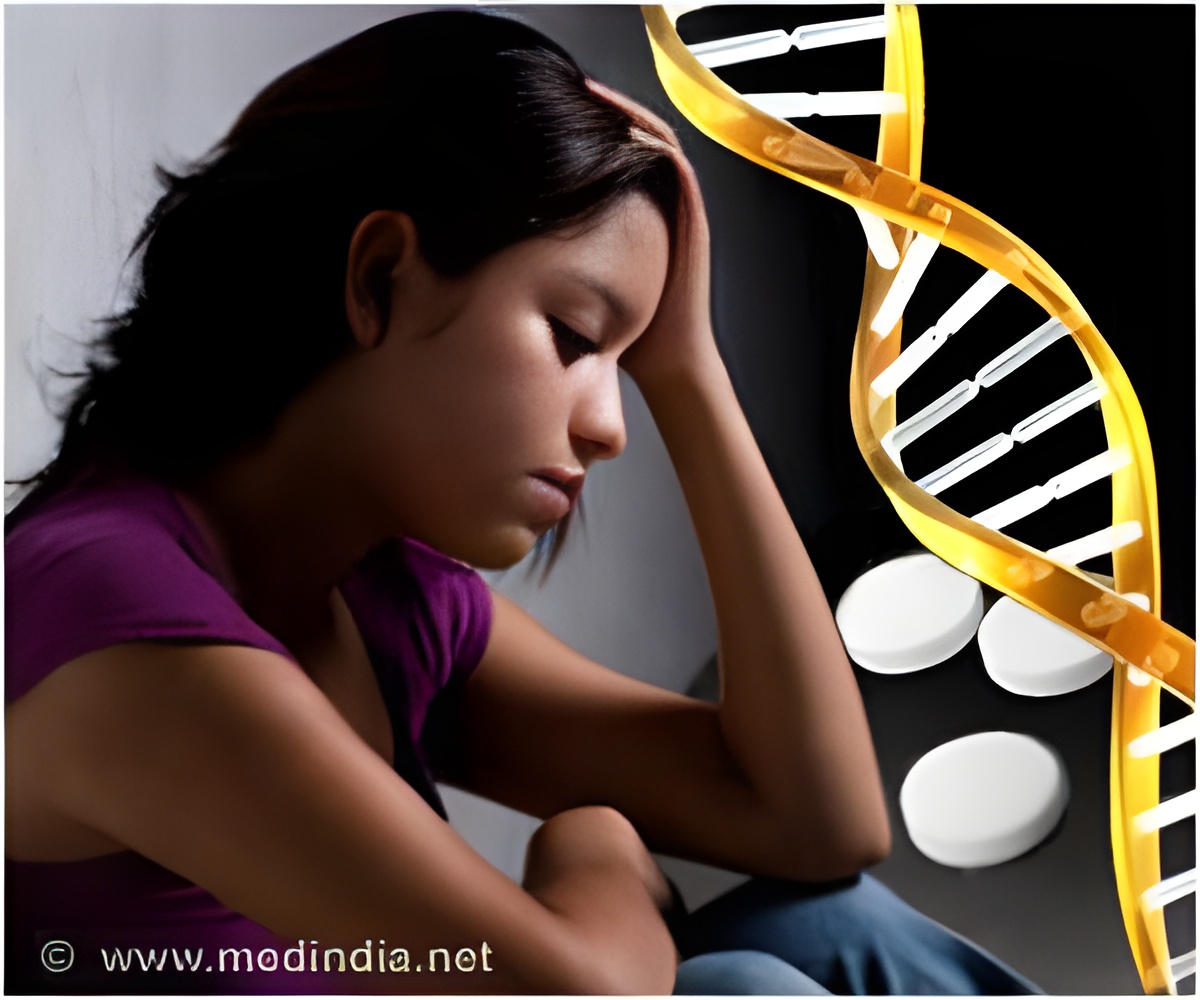Adolescents growing up in poverty may have greater quantities of a chemical tag on a depression-linked gene, making them more vulnerable to the disorder.

‘Genes may play a key role in the development of depression in adolescents living in poverty and having a family history for the disorder.’





The results are part of a growing body of work that may lead to biological predictors that could guide individualized depression-prevention strategies.Adolescents growing up in households with lower socioeconomic status were shown to accumulate greater quantities of a chemical tag on a depression-linked gene over the course of two years. These "epigenetic" tags work by altering the activity of genes. The more chemical tags an individual had near a gene called SLC6A4, the more responsive was their amygdala - a brain area that coordinates the body's reactions to threat - to photographs of fearful faces as they underwent functional MRI brain scans. Participants with a more active amygdala were more likely to later report symptoms of depression.
"This is some of the first research to demonstrating that low socioeconomic status can lead to changes in the way genes are expressed, and it maps this out through brain development to the future experience of depression symptoms," said the study's first author Johnna Swartz, a Duke postdoctoral researcher in the lab of Ahmad Hariri, a Duke professor of psychology and neuroscience.
Adolescence is rarely an easy time for anyone. But growing up in a family with low socioeconomic status or SES -- a metric that incorporates parents' income and education levels -- can add chronic stressors such as family discord and chaos, and environmental risks such as poor nutrition and smoking.
"These small daily hassles of scraping by are evident in changes that build up and affect children's development," Swartz said.
Advertisement
"The biggest risk factor we have currently for depression is a family history of the disorder," said study co-author Douglas Williamson, principal investigator of TAOS and professor of psychiatry and behavioral sciences at Duke. "Our new work reveals one of the mechanisms by which such familial risk may be manifested or expressed in a particular group of vulnerable individuals during adolescence."
Advertisement
This study asked whether higher activity in the same brain area could predict depression in the younger, at-risk TAOS participants. Indeed, about one year later, these individuals (now between 14 and 19 years of age) were more likely to report symptoms of depression, especially if they had a family history of the disorder.
Swartz said the new study examined a range of socioeconomic status and did not focus specifically on families affected by extreme poverty or neglect. She said the findings suggest that even modestly lower socioeconomic status is associated with biological differences that elevate adolescents' risk for depression.
Most of the team's work so far has focused on epigenetic chemical tags near the SLC6A4 gene because it helps control the brain's levels of serotonin, a neurochemical involved in clinical depression and other mood disorders. The more marks present just upstream of this gene, the less likely it is to be active.
In 2014, Williamson and Hariri first showed that the presence of marks near the SLC6A4 gene can predict the way a person's amygdala responds to threat. That study included both Williamson's TAOS and Hariri's DNS participants, but had looked at the chemical tags at a single point in time.
Looking at the changes in these markers over an extended time is a more powerful way to understand an individual's risk for depression, said Hariri, who is also a member of the Duke Institute for Brain Sciences.
The team is now searching the genome for new markers that would predict depression. Ultimately, a panel of markers used in combination will lead to more accurate predictions, Swartz said.
They also hope to expand the age ranges of the study to include younger individuals and to continue following the TAOS participants into young adulthood.
"As they enter into young adulthood they are going to be experiencing more problems with depression or anxiety -- or maybe substance abuse," Hariri said. "The extent to which our measures of their genomes and brains earlier in their lives continue to predict their relative health is something that's very important to know and very exciting for us to study."
Source-Eurekalert















